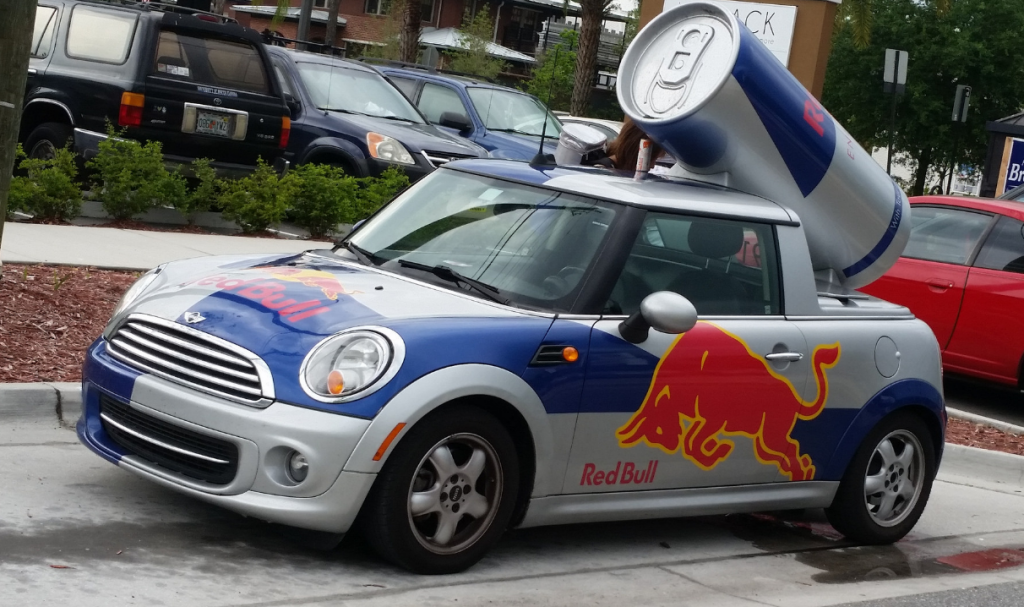Most analysts believe that by 2020 there could be millions of self-driving cars on the highways. The implications are vast … for safety, for energy savings, for the creation of entirely new industries and business models.
It’s time to start thinking through the impact of driverless cars and marketing because suddenly, people who used to be spending their time behind the wheel of a car will have more time to consume content. A LOT more content. Here’s what McKinsey predicts:
Automated Vehicles could free as much as 50 minutes a day for users, who will be able to spend traveling time working, relaxing, or accessing entertainment. The time saved by commuters every day might add up globally to a mind-blowing one billion hours—equivalent to twice the time it took to build the Great Pyramid of Giza. It could also create a large pool of value, potentially generating global digital-media revenues of €5 billion per year for every additional minute people spend on the mobile Internet while in a car.
One billion hours of time. A day.
In addition to this time savings, driverless cars will open up new transportation freedom for the blind, elderly, and people with disabilities — a massive new captive audience.
Do you think there are good times ahead for those who are in marketing and the content creation business?
Yes, indeed.
So what will the world be like for marketers when every driver becomes part of this vast new captive audience? Let’s dream.
The information cockpit
With new roles for the driver and new implications for safety, cars of the future won’t look like cars today. In my mind, some day the driver’s seat will look like the module on a first class international flight.
Imagine yourself in a nice lounge chair with every kind of entertainment option available to you. We’ll be able to watch movies, play games with our friends around the world, and work with a seamless and powerful Internet connection.
Who owns the customer?
Is it possible that automotive companies will make more money as moving entertainment networks than by making cars?
After all, they are going to own that one billion hour of free time every day.
There is a powerful emotional bond between consumers and their content. For me I have feelings of deep connection when I hear the words Star Wars, Bruce Springsteen, Radiohead, and Cormac McCarthy (my favorite living author). If you own our content, you own our love.
One of the reasons that I don’t favor the Amazon Echo right now is because my owned music collection is on the Apple ecosystem. Alexa (the Amazon virtual assistant) can’t play the music stored on Apple iTunes, so Apple owns my love.
What happens when the battlefield for consumer attention shifts from the home to the car? Pardon the pun, but the car companies will be in the driver’s seat. We may end up choosing a car brand based on whether it is Apple-oriented, Amazon-oriented … and oh yes, I think Google has something to say about self-driving cars too (they’ve already struck a partnership with Ford).
It may not matter how powerful the engine is, or what color the car is … we’ll probably choose our car of the future based on the best entertainment features. The cockpit of a self-driving car will be a huge commercial battlefield and a massive new personalized content delivery system.
Eventually our cars will be as personalized as our smartphone and once we get the apps and settings just the way we want them, the switching costs will be significant. Perhaps our first automated car purchase will be our most important one since it may set the boundaries of future purchases.
So far we have not seen many alliances between content providers and car companies but this will have to happen soon.
What kind of content will we consume?
By the time self-driving cars are available, we’ll also have a new kind of content available through virtual reality.
I believe this technology will have a more profound impact on our lives than the Internet itself. A virtual world will surround us like the air that we breathe. And it’s addictive. I think many people will spend most of their day with a headset on. That may sound a little creepy but most of the activities now performed on a smartphone, laptop, and maybe even a television set will transfer to this headset. At SXSW this year I took a VR Alaska cruise. It was so beautiful and relaxing … I didn’t want it to end.
VR will usher in a new way to have meetings, connect on Facebook, discover, relax, and entertain ourselves. So obviously cars will have these devices built in for every passenger. A car will be the perfect setting to sit back and become immersed in another world.
But like the entertainment choices on an international flight, we’ll also be able to consume traditional forms of content like games, books, podcasts, and movies.
If I take a couple of long flights a month, I’ll be searching for some new movies to see. With a billion free hours a day, the world will be craving more movies, more serialized content … more of everything. We could be entering a true golden era for content creation.
As I mentioned in a recent post, podcasts are a red-hot form of content right now. This is the one form that could actually decline in this scenario. Today, many people listen to podcasts in cars because they can’t consume other forms of content like videos or blogs. But if you don’t have to watch the road any more, podcasts may become somewhat less important.
With more time on our hands, long-form written content may have a renaissance if people use the time to study or learn something new during peak productive commuting times.
Because most time in the car is based on a commute, I think it would be useful if a new kind of content category emerges based on your expected travel time. For example, if you have a 40-minute commute, you would probably love to consume some programming that is exactly 40 minutes. Some smart marketers will develop content channels or a search function based on the program LENGTH to serve news and serialized stories that fit your commuting time. In fact, the car could calculate the probable trip length and suggest content that fits your schedule every day.
Perhaps a car will even select a longer route so you can finish that episode of Game of Thrones right before you arrive.
The advertising prospects of driverless cars
What will these mobile entertainment centers mean for advertisers?
- In some ways, a car-based content distribution system may be a “do-over” for the ad industry. Today people hate ads so much they want to block them. Hopefully the industry has learned its lesson and won’t turn cars into places that interrupt and annoy us.
- We would probably enjoy free content as a trade for a sponsorship statement. For example, the Spotify or iTunes of the future will have access to all of the personal information being collected from our travels and align a sponsor precisely with our interests and our destination. “Today’s free music is brought to you by Taco Bell. You’ll be passing 27 of our stores today. Why not try a delicious Chalupa del Grande?”
- When you buy a car from a dealership, you may be able to choose to pay for an entertainment package or get one for free that comes with a sponsor.
- Advertising opportunities on traditional radio stations will be crushed with the end of “drive time.” When we are riding around in the ultimate personal entertainment device, it’s unlikely we’ll choose to listen to ad-filled local programming. Is commercial radio nearing its end?
- An ad-free network like Sirius XM will thrive but it probably needs to expand into everything audio including podcasts and books.
- Some predict that we won’t own cars any more — they will simply come and pick us up. I could definitely see an opportunity for “sponsored rides” in this scenario. Perhaps when your free ride arrives, the entire car will be an ad:
Driverless cars and marketing: eCommerce
A billion free hours a day will also give people more time to shop. PricewaterhouseCoopers projects that spending in the autonomous-car industry will balloon to $43.2 billion globally by 2021. What does a “mobile shopping experience” look like?
- Basically we will be driving around in a mechanical “cookie” that is collecting information about us to feed to advertisers. Special shopping deals could also be targeted to who is sitting in the car, so targeted ads will follow us around wherever we are.
- When I’m on a trip, it’s not unusual for me to forget something. In the future, we can tell the car about our problem and have the missing item waiting for us at the destination. Perhaps that razor or hairbrush will be delivered, or maybe just 3D printed at the hotel or a service station along the way.
- It would be useful to be able to opt-in to streaming ads that are synchronized to our trip. This would help us discover special deals, amazing products, and entertainment opportunities along our route. For example, I love true Texas-style barbecue brisket and that is hard to come by outside of the Lone Star State. I would enjoy receiving a “BBQ alert” if there is a famous joint nearby as I zoom down the Interstate, especially if a coupon comes with it.
I’ve had fun dreaming up the possibilities of driverless cars and marketing possibilities, but I’m sure you have some reactions and ideas, too. Why not share them in the comment section?
The post The overwhelming implications for driverless cars and marketing appeared first on Schaefer Marketing Solutions: We Help Businesses {grow}.
from {grow} http://feeds.feedblitz.com/~/159828000/0/markgrow~The-overwhelming-implications-for-driverless-cars-and-marketing/



No comments:
Post a Comment